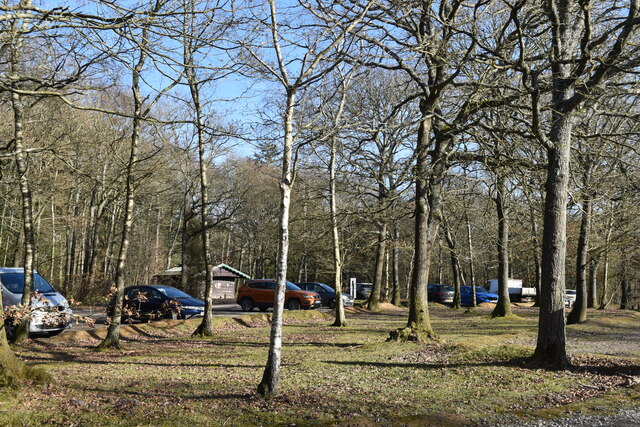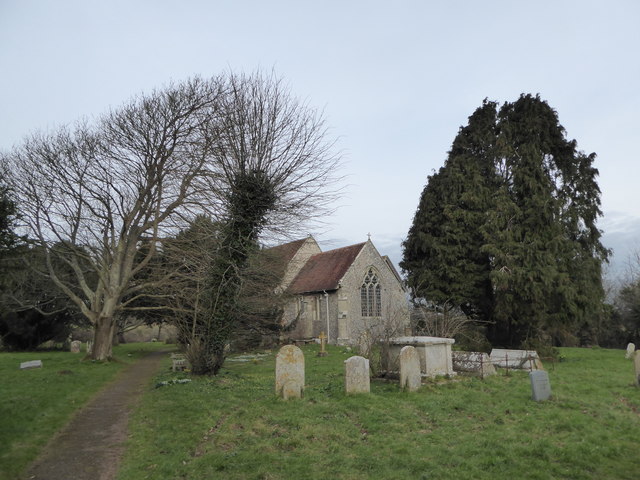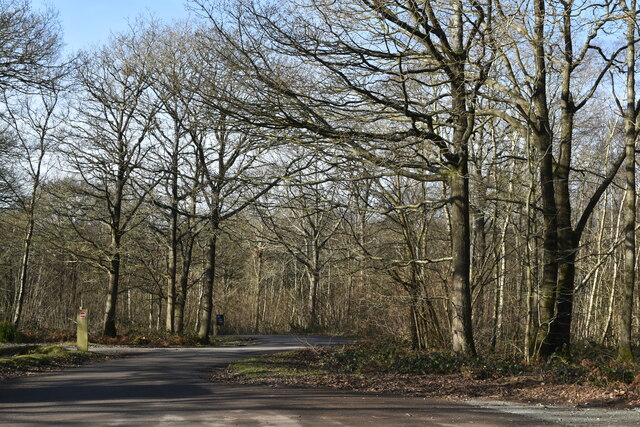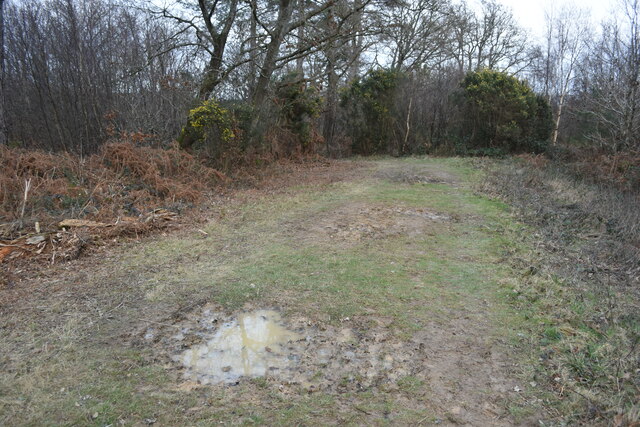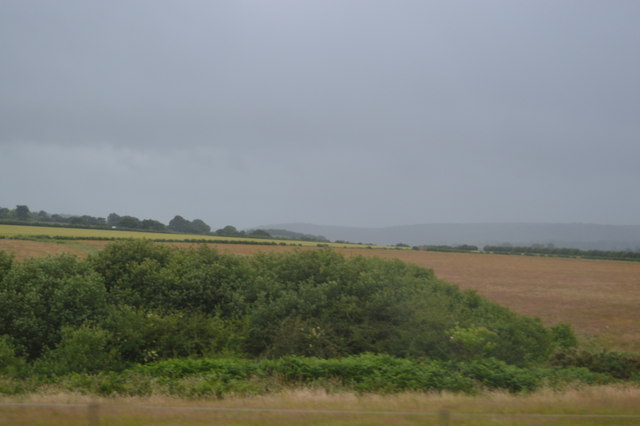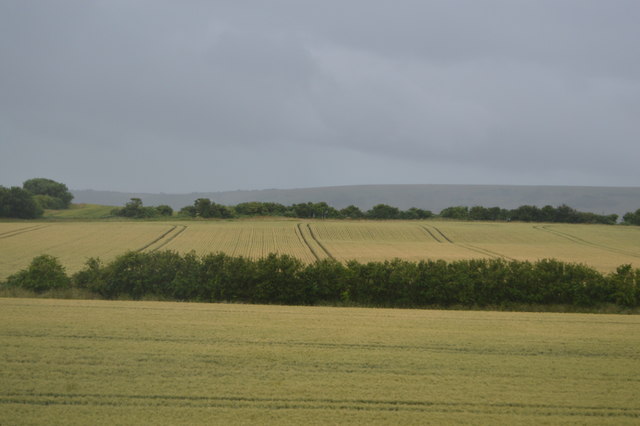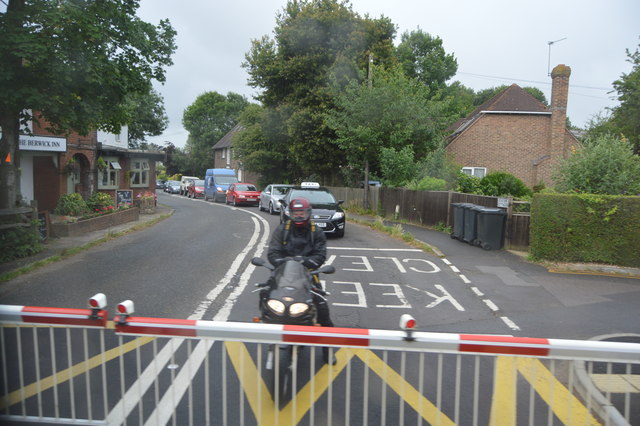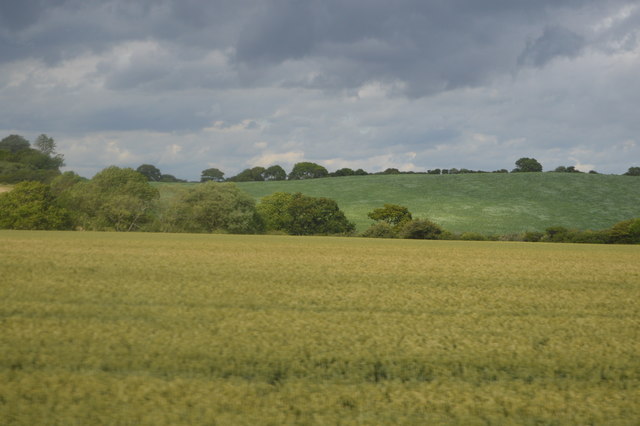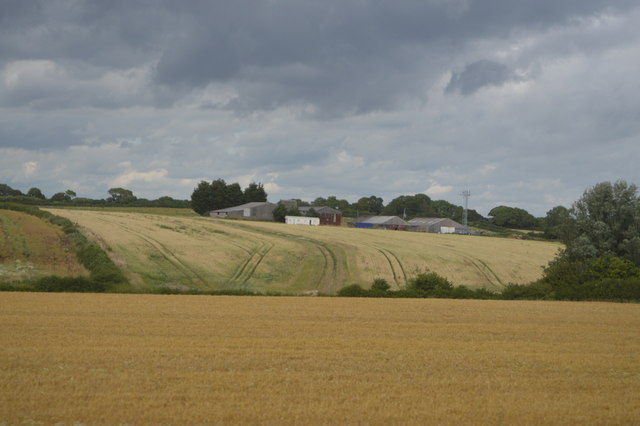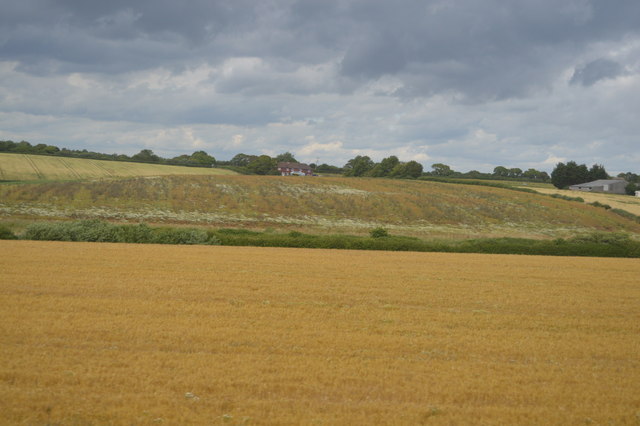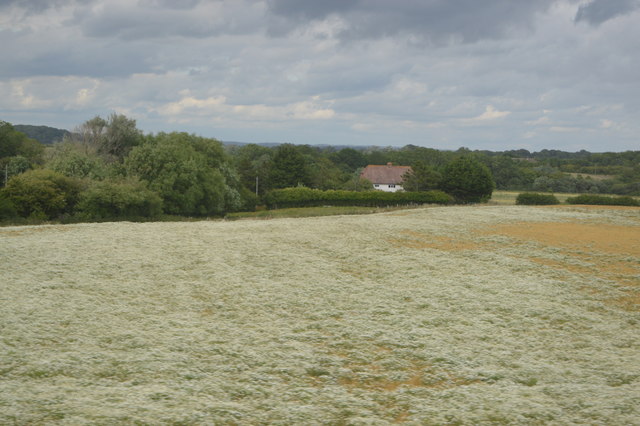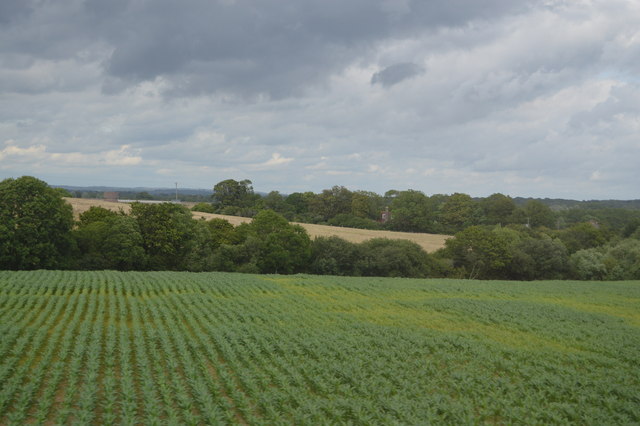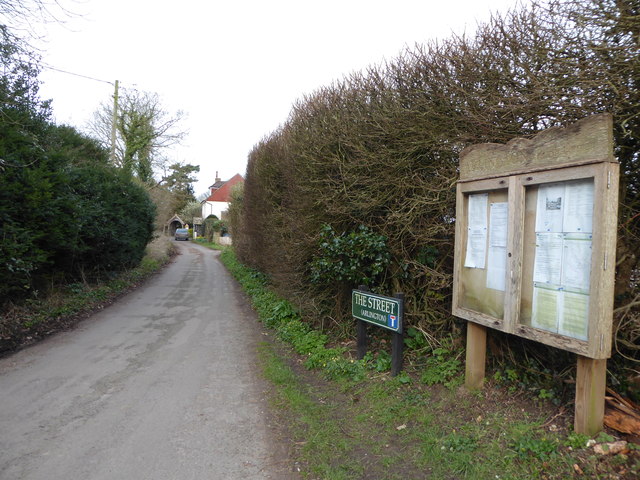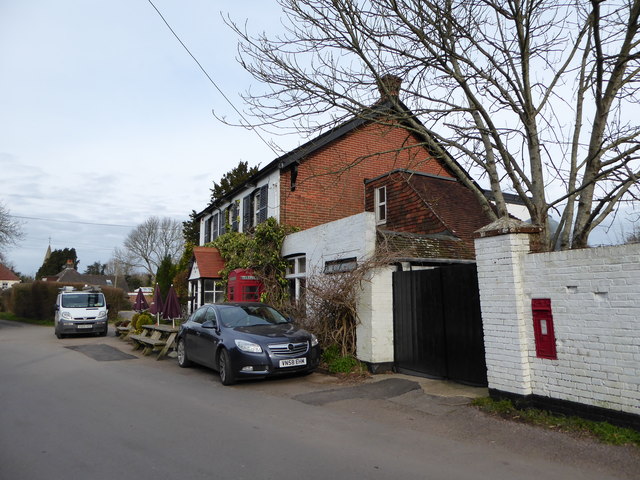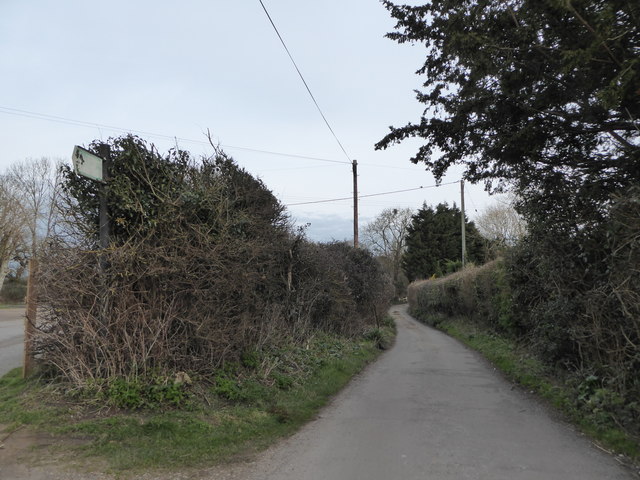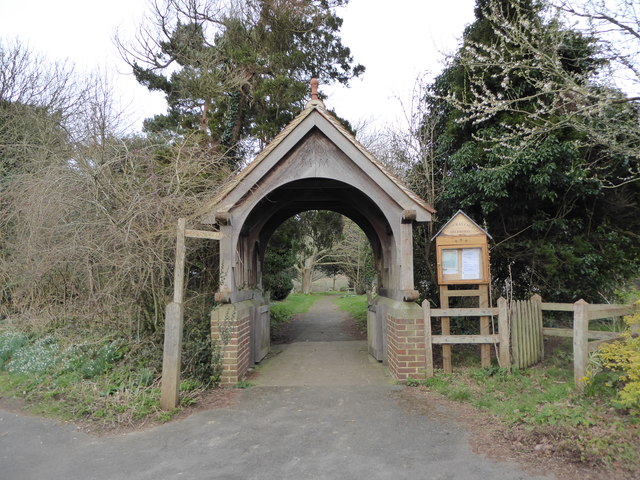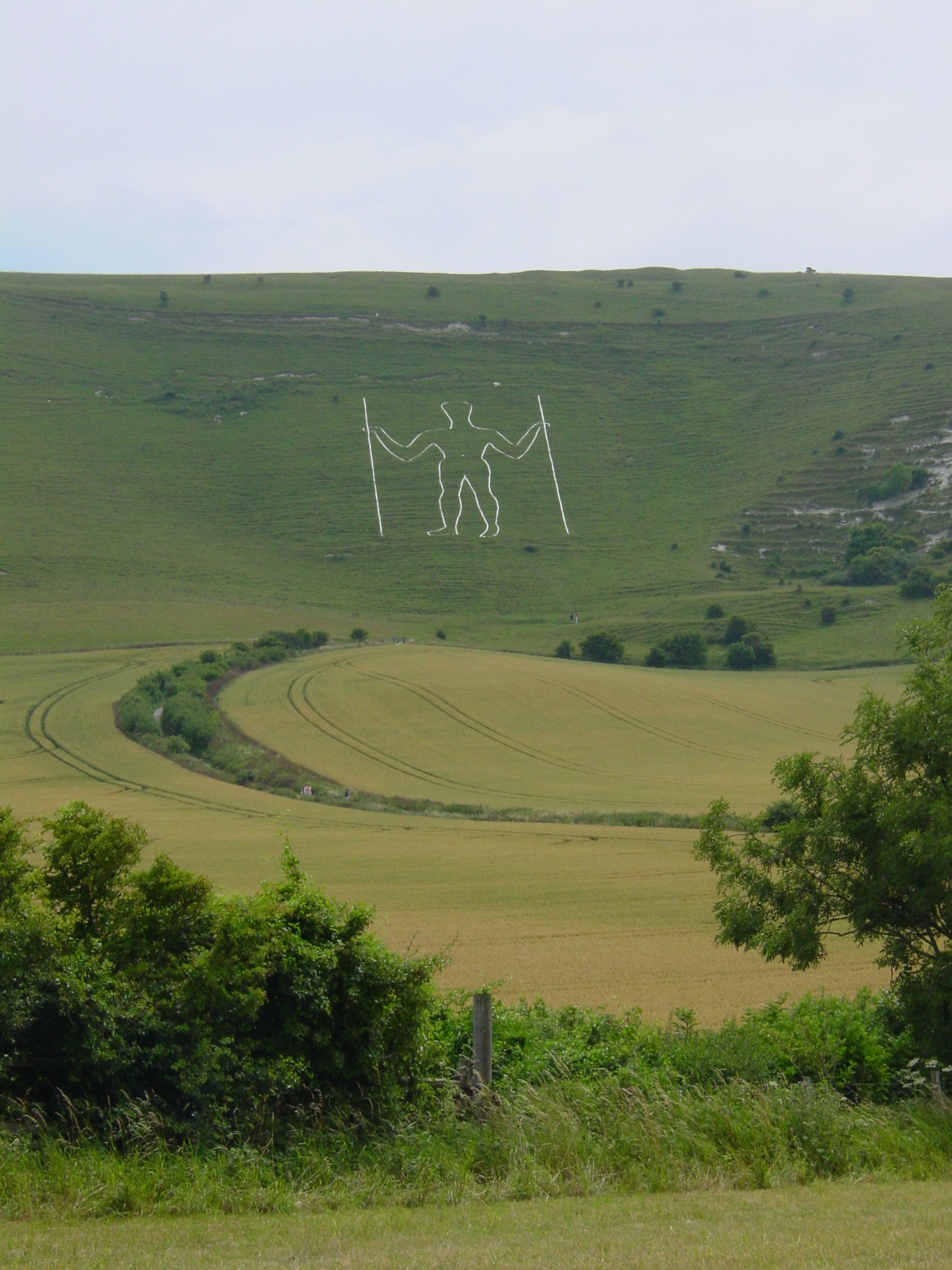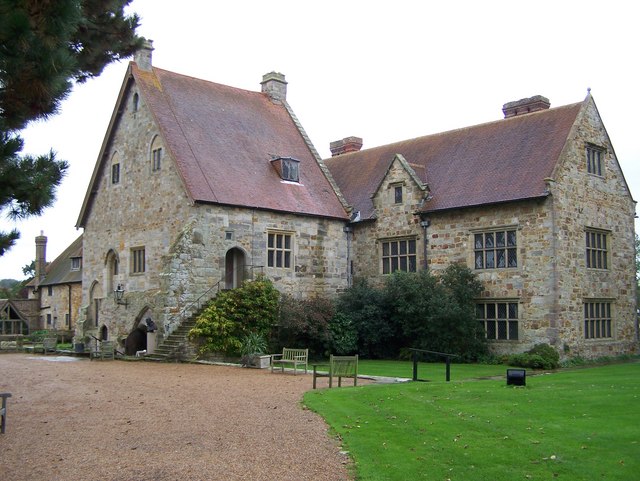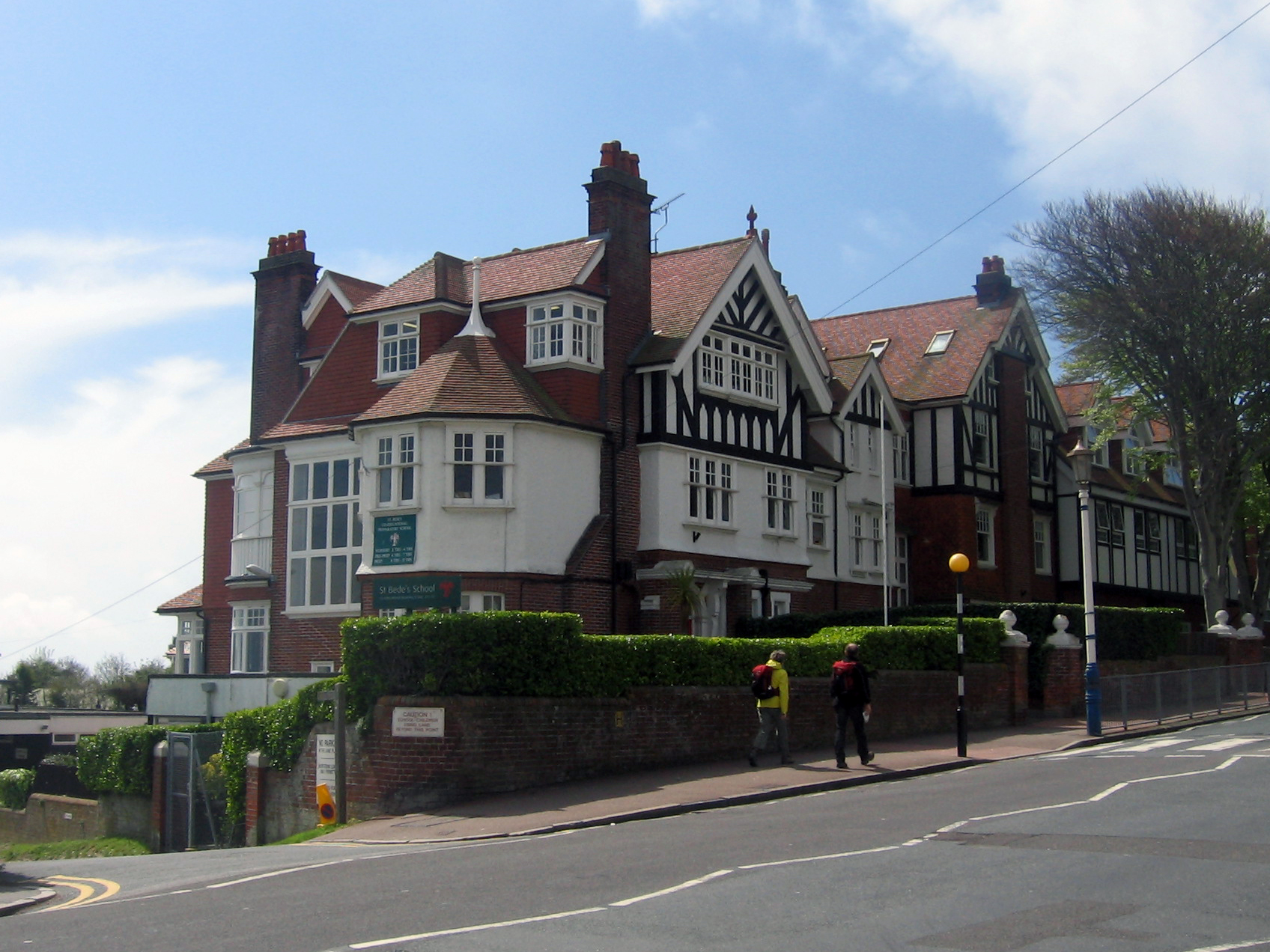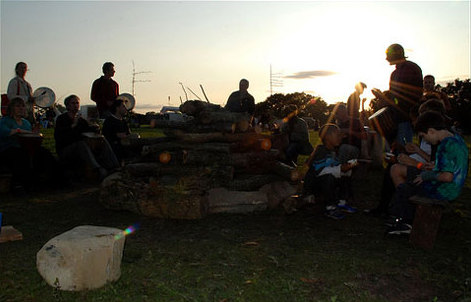Arlington is a rural parish in East Sussex that once stretched from Windover Hill in the south to the outskirts of Hailsham in the north until 1990 when boundary changes meant the modern railway formed the new southern border whilst a section of the former Dicker Common, once part of Chiddingly, was added to the north, and in the north west where the parish once crossed into the suburbs of Hailsham it was pulled back to the A22. Geologically the old parish crossed three distinct areas, the chalk of the South Downs, the clay of the Low Weald and the strip of gault and greensand that separates them. The latter is highly fertile and was one of the earliest areas north of the Downs to be cultivated, starting during the Iron Age and continuing into the Roman period, particularly in the case of neighbouring Ripe and Chalvington. It is watered by the Cuckmere River which provided a western boundary with Berwick in the south of the parish (Until boundary changes in 1990) and Hellingly in the north and between them ran through the centre of the parish. In 1971 a large meander to the west of the village was cut off to make Arlington Reservoir.
There were five distinct settlements in the old parish; the village of Arlington, Milton Street, Upper Dicker, Wick Street and Caneheath. The main village of Arlington was settled during the Saxon period and grew during the middle ages mainly to the west of the church. However, sometime during that period the village was deserted or shrank in size with the remnant coalescing around its current position on a minor crossroads to the east of the church. To the south is Milton Street which lies on the edge of the Cuckmere Valley as it breaks out of the Downs along an old droving route. The settlement was most likely formed to serve the nearby manor of Milton Court during the middle ages. Nearby are two earthworks, Burlough Castle and The Rookery, which were built during the early Norman period to protect the Cuckmere River. Milton Street was transferred out of Arlington in 1990 to form a new parish called Long Man, an amalgamation of Wilmington, Folkington and the southern end of Arlington. To the north is Upper Dicker also located around a crossroads at the southern edge of the former 1000 acre common known as The Dicker. The common straddled the parishes of Chiddingly, Hellingly and Arlington and was enclosed in 1813 except for the small portion in Arlington which survived until 1852. It is on this portion that much of the village is located and is likely to have grown around the individual farms and smallholdings that would often position themselves around the entrance/exit of a common. There is also a case that the settlement may have shifted westwards on the building of Michelham Priory in 1229 which was known to be a location of a former chapel. The subsequent emparking of the land to the south may also have contributed to this shift. The collection of dwellings became known as The Dicker in the 18th century and grew during the 19th to become the largest populated settlement within the parish. The two minor settlements of Wick Street and Caneheath, little more than a collection of farms, lie to the west and east of Arlington village respectively. Wick Street, as the name suggests, lies on an old local Roman Road that is now the minor route from Upper Dicker to Berwick. Caneheath straggles along a country lane next to Abbots Wood, a large area of woodland that once belonged to Michelham Priory that is now a nature reserve.
Two main roads briefly crossed the old parish boundaries; the A27 in the south that has now been transferred to Long Man parish and the A22 which forms the eastern boundary with Hailsham. Both are new roads, the latter was approved and started in 1937 but not completed until after the war, whilst the former was built as a turnpike in 1819 to replace a much older east-west route that dates from the Roman period was known as Farne Street and linked Chichester to Pevensey Castle. As it crossed the parish it followed Chilverbridge Road now a minor lane from Berwick, then Moorshill Lane, Whiteing Lane and Hayreed Lane now little more than unmetalled restricted byways. Another former local Roman Road that once ran from Newhaven to The Dicker follows the course of the minor road called Wick Street from Berwick to Upper Dicker and was the B2108 until it was downgraded to C status in the 1970s. There are a number of other minor lanes; Arlington Road heads east from Hailsham before splitting at Milton Hide one route heading to Upper Dicker whilst the other heads to Arlington via Caneheath; The road to Berwick heads south from the village via The Street and Chilverbridge Road; whilst south of the A27 a minor lane heads to Milton Street then on to Litlington and Exceat. The Lewes to Eastbourne railway crosses the parish to the south with Berwick station just over the parish boundary. There are tales that it was built for Horatio Bottomley, founder of the John Bull newspaper and MP, who resided at Upper Dicker between 1889 and 1929, but this is incorrect as the station building dates from 1846 and is clearly marked on an 1874 OS map as Berwick Station. A small airfield known as Wilmington Aerodrome was laid out at Milton Gate near the A27 in 1916 as a landing ground which passed into civilian use after the war and was home to Eastbourne Flying Club in the 1930s. There was talk of developing it as Eastbourne Municipal Airport but this was halted by the Second World War with the authorities closing the runway after which it never reopened and has since returned to agricultural use.
There are two churches in the parish, the 11th century church of St Pancras in Arlington built on the site of an earlier wooden one and utilising stone from the remains of nearby Roman roads, and the Holy Trinity in Upper Dicker, consecrated in 1845. Two former chapels at Michelham and Milton Court have long been demolished. Education is provided by Park Mead Junior School at Upper Dicker which opened in 1881 and St Bedes independent school which arrived in the same village in 1979. There are four public houses within the old parish boundary; The Old Oak Inn at Caneheath dates from the 18th century; the Plough Inn at Upper Dicker was first licensed in 1826; the Yew Tree Inn at Arlington opened as a beer house in the 1890s as did the Sussex Ox in Milton Street. A post office operated in Upper Dicker from 1852 until its closure in 2008, however, the small general stores is still open. To the north east on the minor road from Hailsham is Arlington Stadium, opened in 1929, and since 1938 home to the Eastbourne Eagles speedway team. The venue also hosts stock car and banger racing.
Bibliography
Books
P.Brandon - The South Downs (Phillimore, 1998)
GR.Burleigh - "Medieval Earthworks at Arlington" Sussex Archaeological Collections 112 (1974)
C.Butler - East Sussex Under Attack (Tempus, 2007)
M.Larkin - In the Footsteps of Time (Ulmus, 2006)
K.Leslie & B.Short (ed) - An Historical Atlas of Sussex (Phillimore, 1999)
P.Longstaff-Tyrell - Turnpike Territory - A Guide to the Old Coach Road (Eastbourne Local History Society, 2007)
L.Smith - A History of the Dicker (Lez Smith, 2003)
J.Vigar - The Lost Villages of Sussex (Dovecote Press, 1994)
A.Vincent - Roman Roads of Sussex (Middleton Press, 2000)
Websites
Burlough Castle (
Link
Listed Buildings in Arlington (
Link
St Pancras, Arlington (
Link
Maps
Tithe Map, 1843 (East Sussex Record Office, TD/E 51/1-2 )
Yeakell & Gardner, 1778-83 (2 inches to a mile - see
Link
Ordnance Survey, Eastbourne & Hastings 1813 (1:50,000 - Timeline Maps, 2005)
Ordnance Survey, 1874-1980 (1:2500 and 1:10000 - See
Link
Ordnance Survey, Brighton & the South Downs 1929 (1 inch to a mile)
Ordnance Survey, Eastbourne 1940 Revised Edition (1 inch to a mile)
Ordnance Survey, Eastbourne 1967 Revised Edition ( 1 inch to a mile)
Ordnance Survey, Pathfinder Series 1982 - Newhaven & Polegate (1:25000)
Ordnance Survey, Explorer Series 2009 - Eastbourne & Beachy Head (1:25000)
Lewes District Street Plan (Barnetts, circa 1972)
East Sussex Street Atlas (Geographers A to Z Company, 2004)
